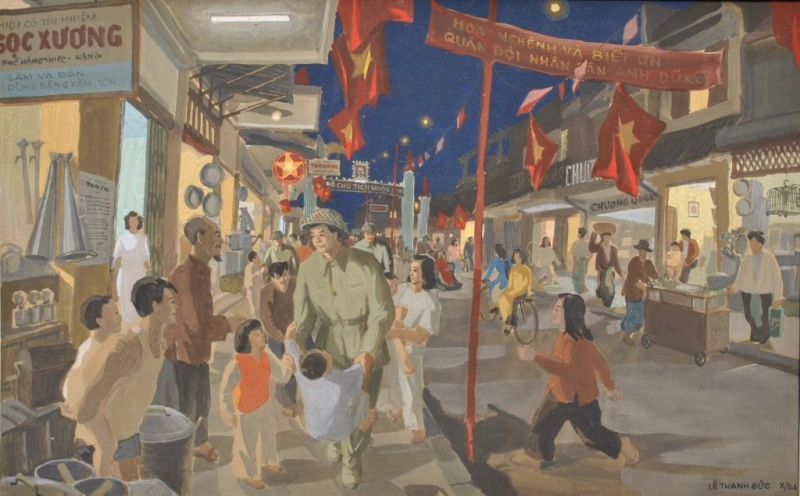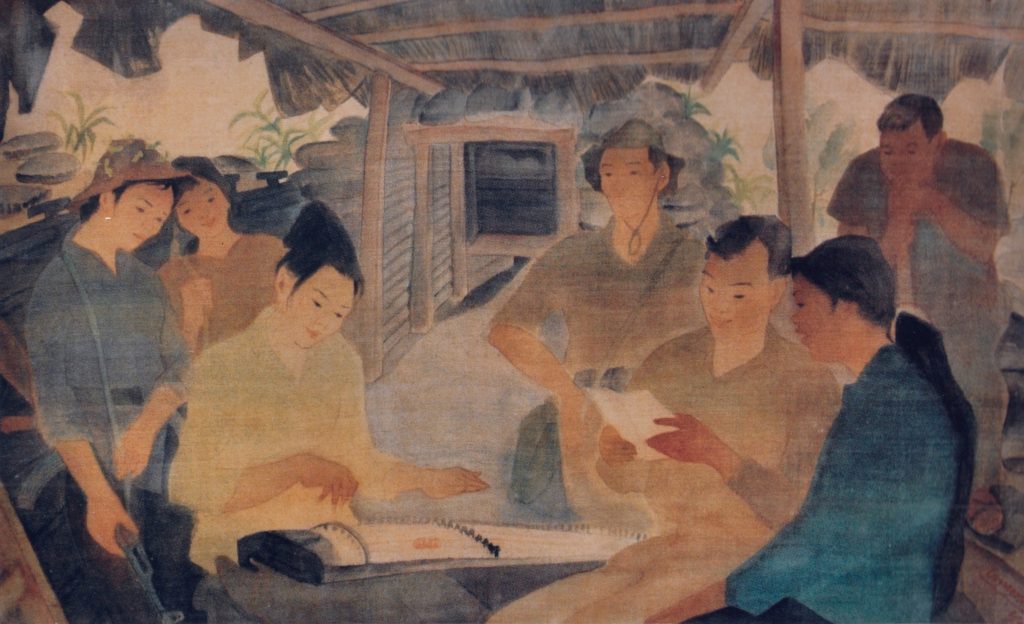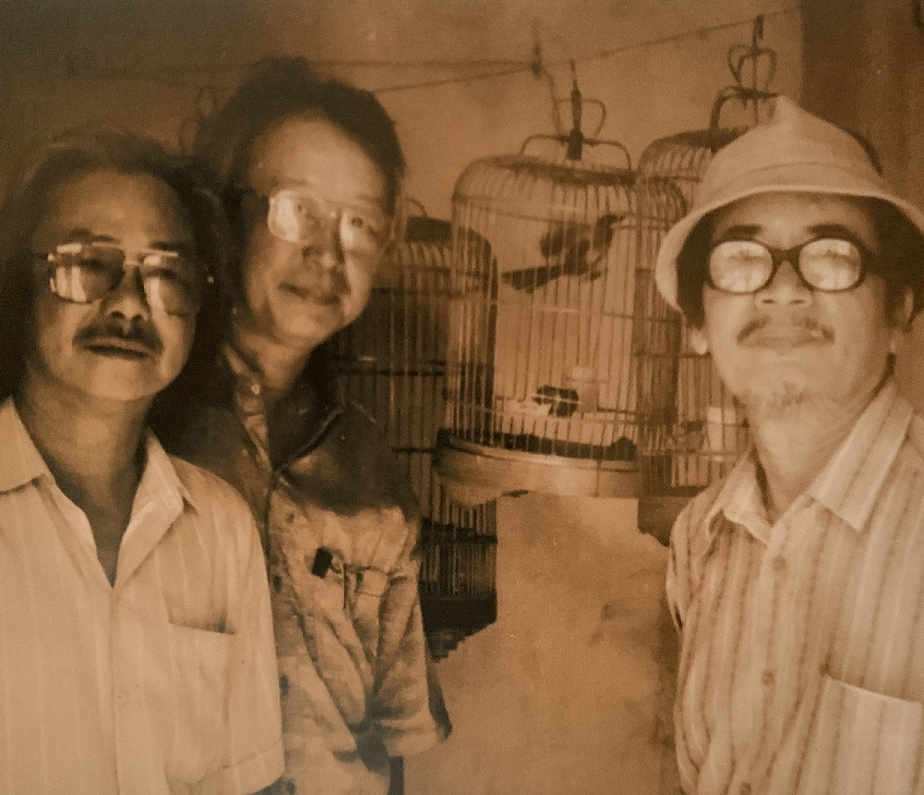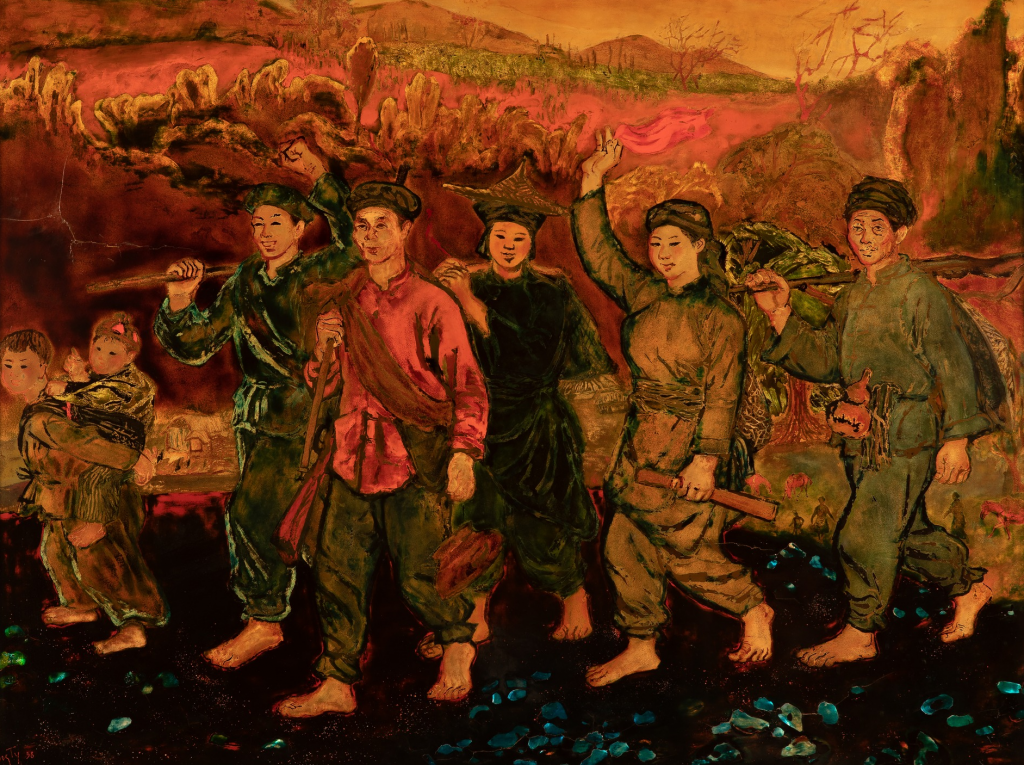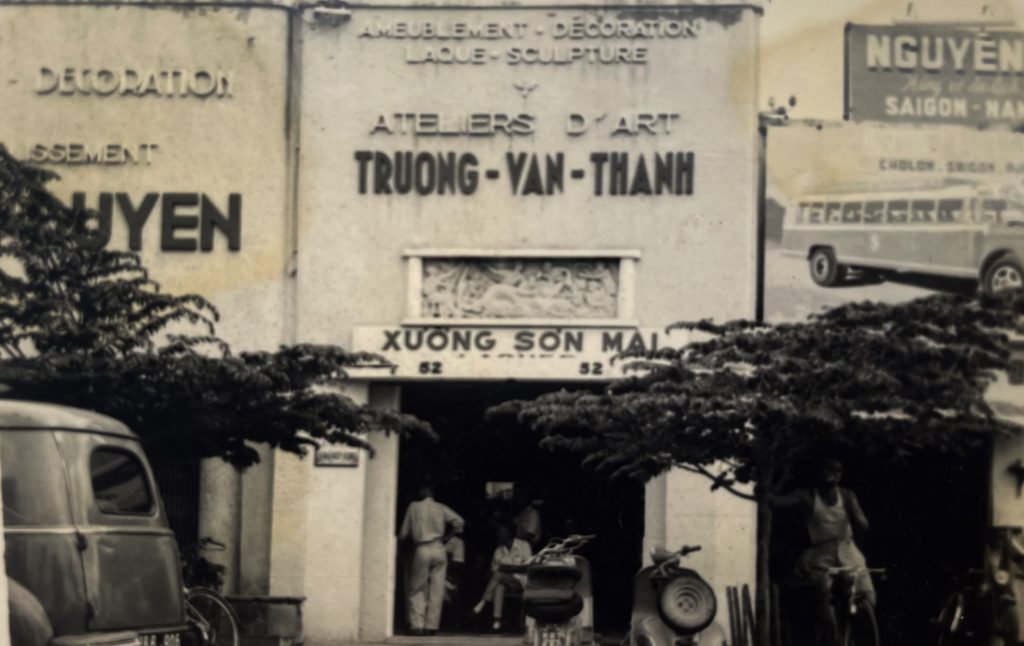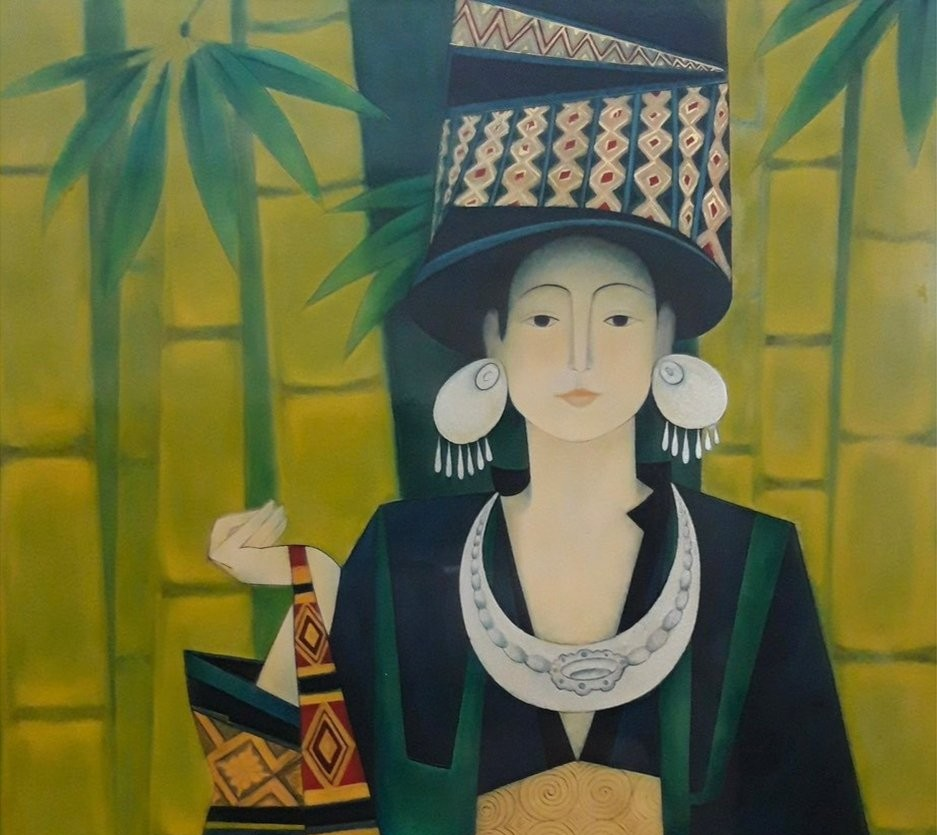Monday, 18 January 2021.
Written by Elise Luong. Photos by Alberto Prieto.
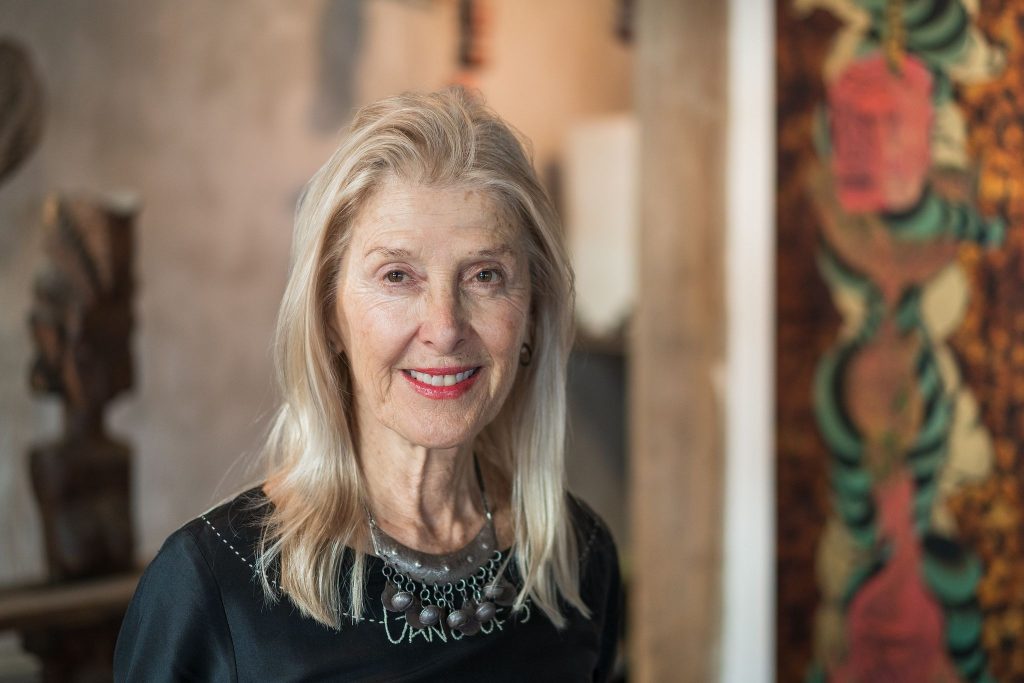
Tucked in an alley south of Hai Ba Trung stands Suzanne Lecht’s glorious home, a magical abode crowned with an ancient nhà sàn from Mai Chau. After having lived there for more than 25 years, Suzanne reflects on her work as a dedicated patron of the arts and how Kali, her beloved turtle, connected with Mick Jagger.
You were living in Tokyo before taking the unexpected leap to come to Hanoi. What did you expect from the city? What were your first impressions?
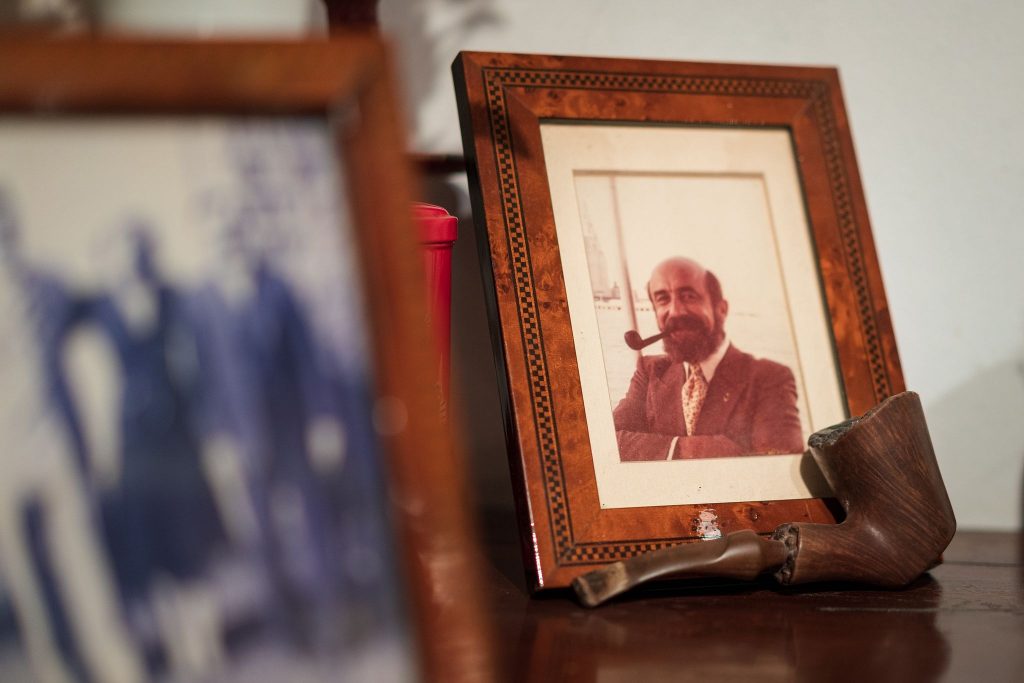
The late Charley Lecht on his wedding day in September 1980. “We were on a sailboat that encircled the entire island of Manhattan. Happy Day!”
After my husband died suddenly in 1992, I stayed in Tokyo for another year, not sure of where to go or what to do with my life. In late 1992, I explored many places as a potential place to live, looking for some big passion to build my life on, but not sure exactly what that was. I went to Beijing, Shanghai, Hong Kong, Bangkok, Chiang Mai…all looking for this calling, but nothing happened. Then in mid-October of 1993, just two months before my housing contract, work permit and visa for Japan were about to expire, a friend of mine, Mary Walsh, came to see me. She was the producer for CBS in Tokyo at the time and had just returned from Saigon where she was reporting on the first Cathay Pacific flights to Vietnam. She had brought with her a newspaper, the Vietnam Investment Review, where an article by Nora Taylor caught my attention. Nora was writing about this group of artists in an article entitled: Art’s “Gang of Five”: the ones to watch hold a third joint exhibition of art from the heart.
These young artists represented the harbingers of peace and hope for a new Vietnam, finally at peace after hundreds of years of war. Free from painting propaganda works or works promoting nationalism, they were left alone to paint their hopes, their dreams, their inner spiritual life. I saw beautiful works of art, with clear influences from the west and yet with iconic Asian symbols and composition. A fascinating fusion of East and West.
When I looked at these images I began to dream… I could go to this country that shares this tragic sorrowful past with my own country, I could work with these amazing artists and in some small way become a bridge between the two countries through the healing power of the arts. I put down the article, picked up the phone, called my moving company and said, “Pack me up, I am moving to Hanoi!”
Can you describe this first meal with Phạm Quang Vinh from the Gang of Five?
This was one of those magical encounters that seem so random but I know in my heart, it was my destiny. I was taken to Vinh’s house by Phuong, a young 25-year-old Việt Kiều who had left Hanoi when he was seven on a perilous boat journey and was eventually allowed to immigrate to New Zealand. He had returned to Hanoi for a visit when we met in the Ho Chi Minh Museum on my very first day in Hanoi. We started to talk about our dreams… he mentioned that his was to return to his motherland and do something to help his country and to rediscover his childhood. I said my dream was to live and work in an artist colony. This is when Phuong said, “Oh, well, I am living with Phạm Quang Vinh, one of the Gang of Five, why don’t you come home and have lunch with us?”
Vinh’s family had two small rooms in an old French villa on Bui Thi Xuan. As we walked up the narrow creaky stairs to the second floor we passed by the bathroom-kitchen which was simply a room with a tile floor and a spigot for water… there, squatted on a small stool, was an elderly man cooking peanuts and making tofu. I was introduced to this frail man as ông An, Vinh’s father. In the big shared room, I saw two chairs and a small tea table, and a platform used as a bed. The walls were covered with eclectic artworks and Vinh’s mother, bà Tinh, graciously welcomed me and introduced me to Vinh’s older sister, Phuong.
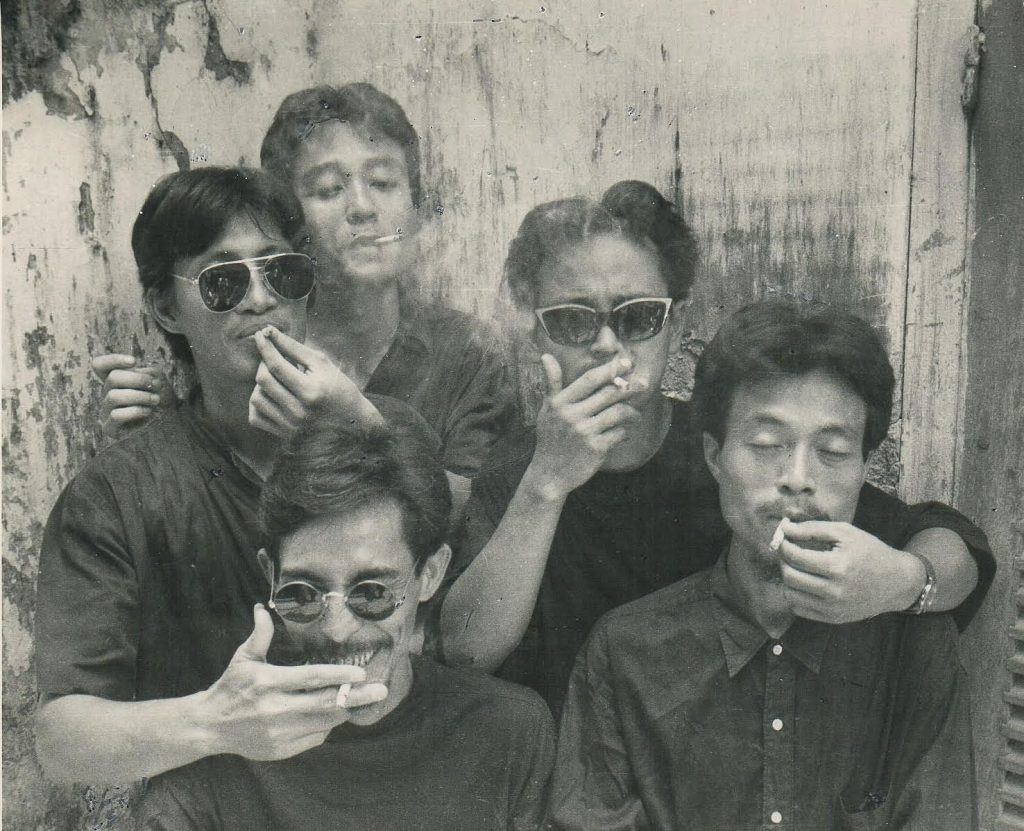
Gang of Five, 1993.
Soon, a mat was spread out on the floor and the whole family sat to share a meal. The food was simply delicious and I was so moved that these people, who had no idea who I was, had graciously opened their home to me. I was astonished to see such warmth towards a stranger, especially a 45-year-old Vietnam War-age American, the former enemy of these charming people.
There was never any evidence of animosity which could have been expected and immediately after eating Vinh took us to the studio of another of the Gang of Five members, Ha Tri Hieu.
Only three years after arriving in Vietnam, you organized the exhibition “The Changing Face of Hanoi” in Hong Kong. What was it like to internationally showcase Vietnamese artists in the ’90s?
In 1994, I met Percy Weatherall, at that time the CEO of Hongkong Land, one of the oldest and most prestigious developers in Asia, who was curious to see the works of Vietnamese artists. I spent many days taking Percy to artists’ studios and he became more and more excited by what he saw.
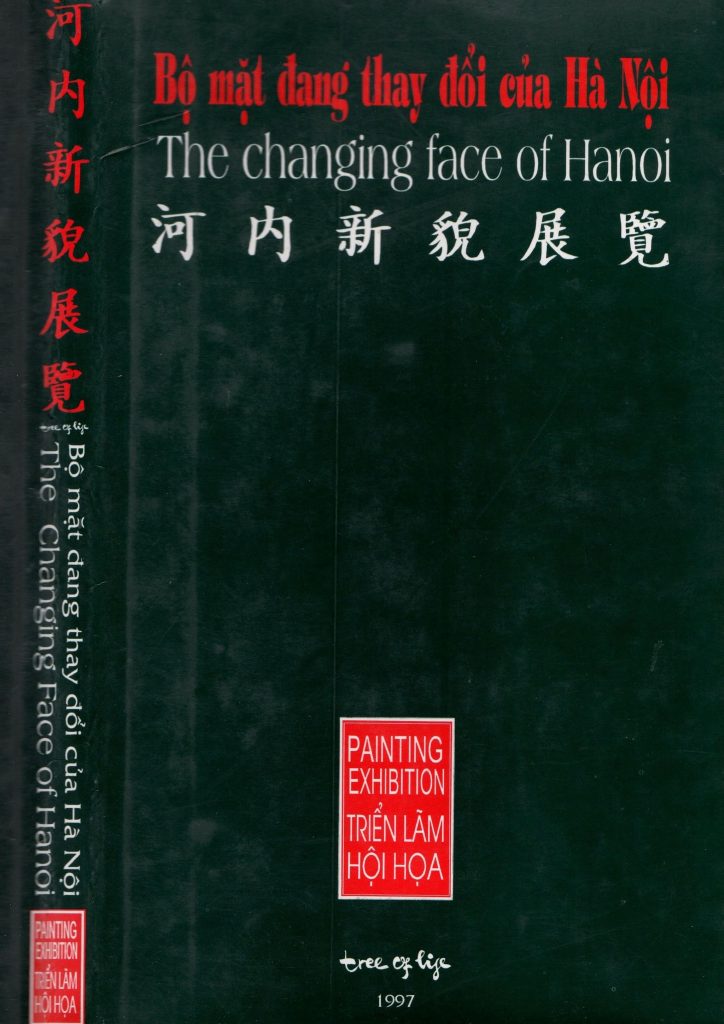
Catalogue cover The Changing Face of Hanoi, 1997.
At that time, Hongkong Land was building their first office tower on Hai Ba Trung and Percy commissioned the artist Lê Công Thành to create two big bronze statues for the lobby. Then he proposed that we do an art exhibition together in Hong Kong of some of these extraordinary artists he had seen. It was to be part of the occasion of the handover of Hong Kong to China in June of 1997 and I, of course, was thrilled, honored and extraordinarily excited by this idea and immediately went to work.
I decided to select five artists of different generations that I thought best represented this extraordinary country, its rapid growth and international integration. I decided to call the exhibition “The Changing Face of Hanoi” for just as the art was developing, the country too was going through seismic changes.
Nguyễn Quân, artist, art critic, and mentor to the Gang of Five was my first choice, and then Thành Chương, who was by then getting a lot of attention for his monumental lacquers, my dear friend and supporter Phạm Quang Vinh, and then Lê Quảng Hà and Phạm Minh Tuấn, two young emerging artists doing very creative and innovative work. My friend Jeffrey Saunders, who at that time worked for Saab, arranged for us to have a private pre-sale at the prestigious China Club in Hong Kong. Jeffrey had invited many prominent business people including Horst Geicke, now of VinaCapital, who became a big supporter of our exhibition. The mayor of Hong Kong bought some works and we ended up selling half of the show on that very first evening!
The exhibition was held at Hongkong Land’s Exchange Square in the Rotunda and was open for three weeks. Except for Nguyễn Quân, who studied physics in Germany, none of the artists had ever been on a plane or out of the country. It was a glorious magical time for everyone. I was later invited by Hongkong Land to do another exhibition of Vietnamese artists at the Rotunda in 2012 and I will always be indebted to Percy and all my friends who have supported my efforts to expose these marvelous artists to the international art world.
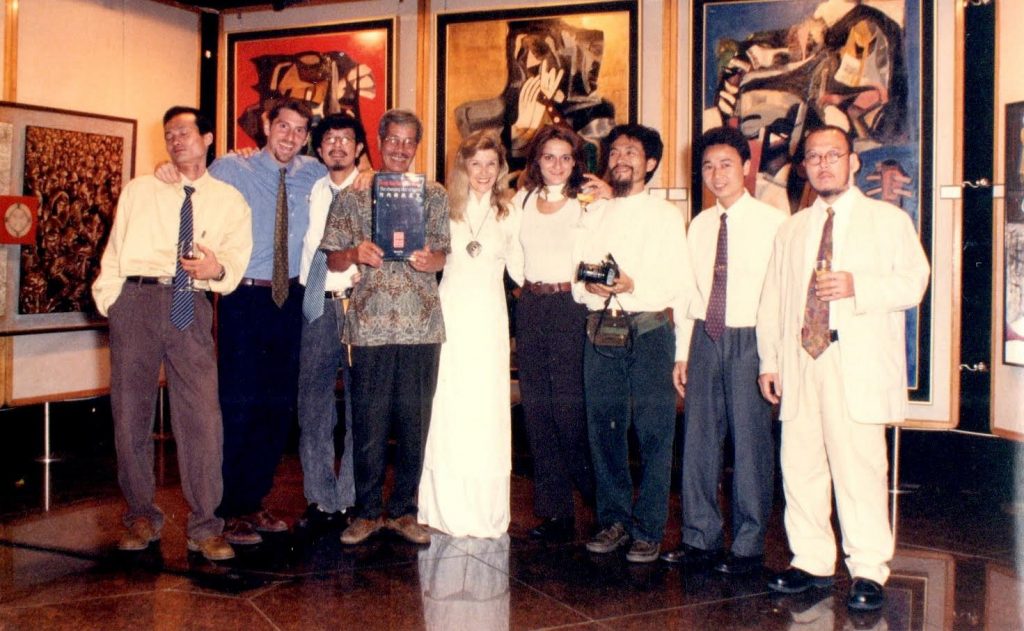
Artists at The Changing Face of Hanoi opening with Jeffrey Saunders, Nguyen Lai from Nam Son Gallery and friends, 1997.
Your home in Hanoi now also welcomes Art Vietnam Gallery, the gallery you founded and have directed since 2002. This seems like the perfect setup for you now but do you miss running a public space?
Well, quite truthfully, no! I have had three beautiful galleries in Hanoi and while I have loved doing shows and having the ability to show big and varied works, when I was forced to move out from my last location on Ly Quoc Su in 2017, somehow I was ready for a change.
I love the intimate personal atmosphere of the salon gallery, my neighborhood is a very quiet typical Vietnamese setting, and our guests love to come here and relax, talk about art, share meals with us, play the piano, etc. It is easier for people to envision what these works would look like in their own homes and I feel happy about that. Also I don’t have to travel to get to work. I just have to roll out of bed!
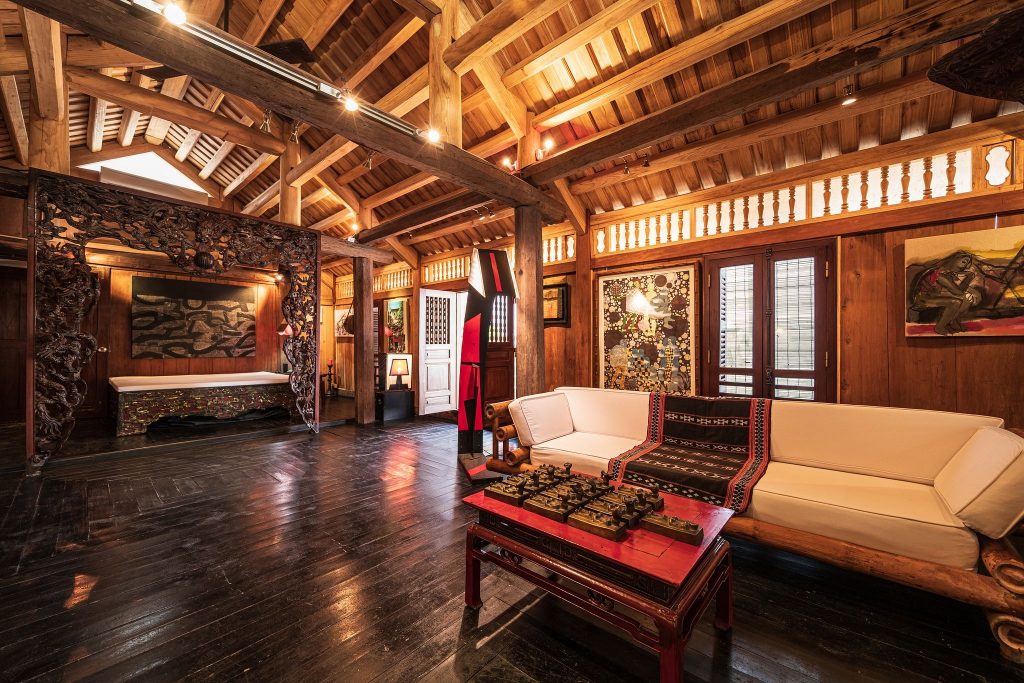
Doors on the third floor opening to the outside terrace. Works by Nguyen Cam, Dinh Thi Tham Poong, and Nguyen Nghia Cuong.
Could you explain how the house was built?
My house/salon gallery is on a plot of land that belonged to Vinh’s family. In March of 1994, I had purchased an old US Army jeep in Ho Chi Minh City. After driving it up to Hanoi with the help of the young Phuong, we decided to take a trip with Vinh and another artist friend. We went to Son La, passed through Dien Bien Phu and then spent the night in Mai Chau with a White Thai family Vinh knew from his student days. It was a magical evening being with this family, the whole village came to visit with us and entertain us with music and dance.
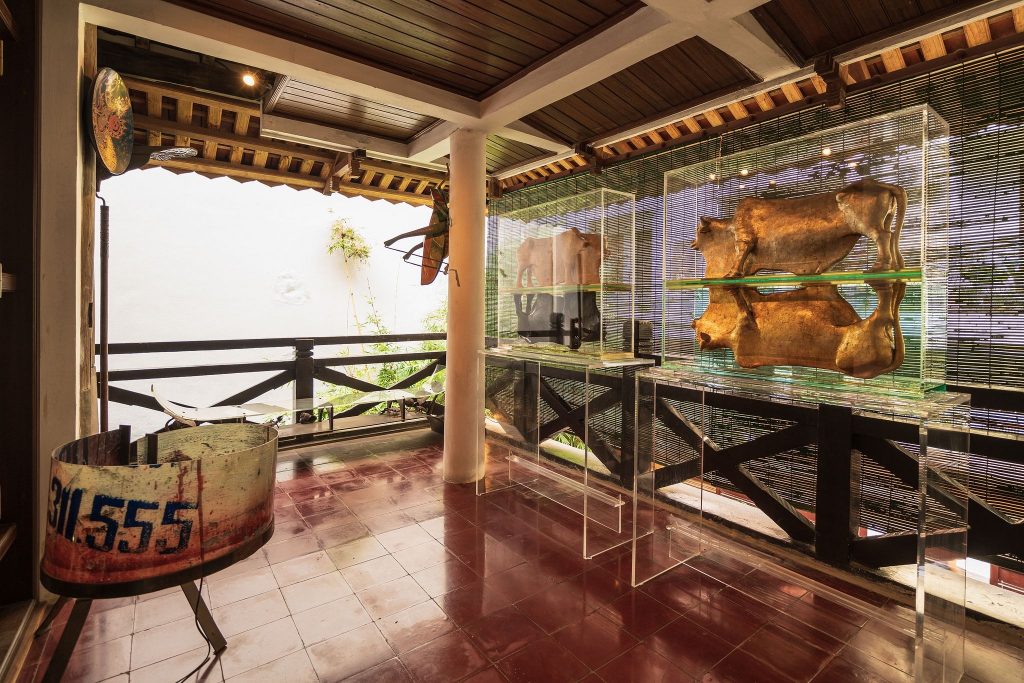
Second floor terrace with ceramic cow installation ‘Shadow I,II’ by Pham Quang Vinh, lamp by Lolo Zazar, and Dinh Cong Dat’s grasshopper.
Later when we returned to Hanoi, Vinh revealed that he had bought that very White Thai house, a simple house on stilts, and that he was going to bring it to Hanoi and use it for his studio. I thought to myself, “I want to live in a house like that!” and, after pondering this for some time, I approached Vinh and said, “You know, instead of me paying rent here in Hanoi to someone I don’t know, why don’t I help you make this project bigger? We could build a ground floor that could be a gallery to showcase your and others’ artwork. We could make a studio for you on the second floor and then I could live in the stilt house that we put on the third floor?”

Ground floor with artworks by: Nguyen Quang Thang, Nguyen Thi Chau Giang, Maritta Nurmi, and Phi Phi Oanh.

Ground floor with artworks by: Le Quoc Viet, Chau Giang, Maritta Nurmi, and Phi Phi Oanh.
Decision made! We would meet in my flat at the end of each day and draw plans of how we envisioned this multi-layered construction. I had my ideas as a western interior designer and Vinh of course was full of exotic, charming and artistic Vietnamese ideas. Everything in the house was made according to our design by very talented artisan wood craftsmen, uniquely and lovingly created.
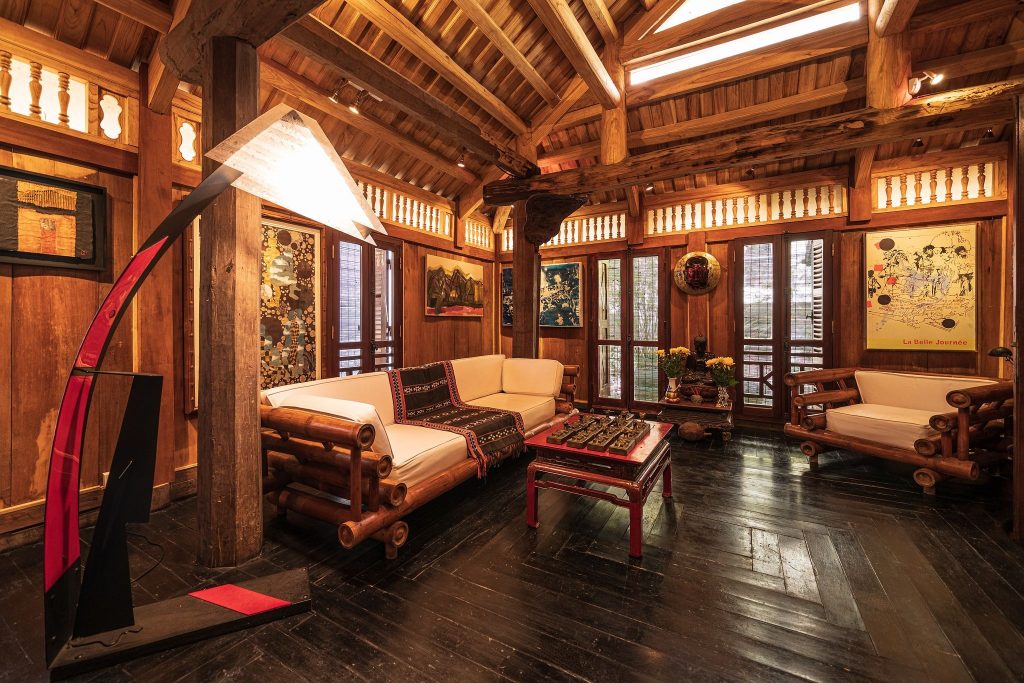
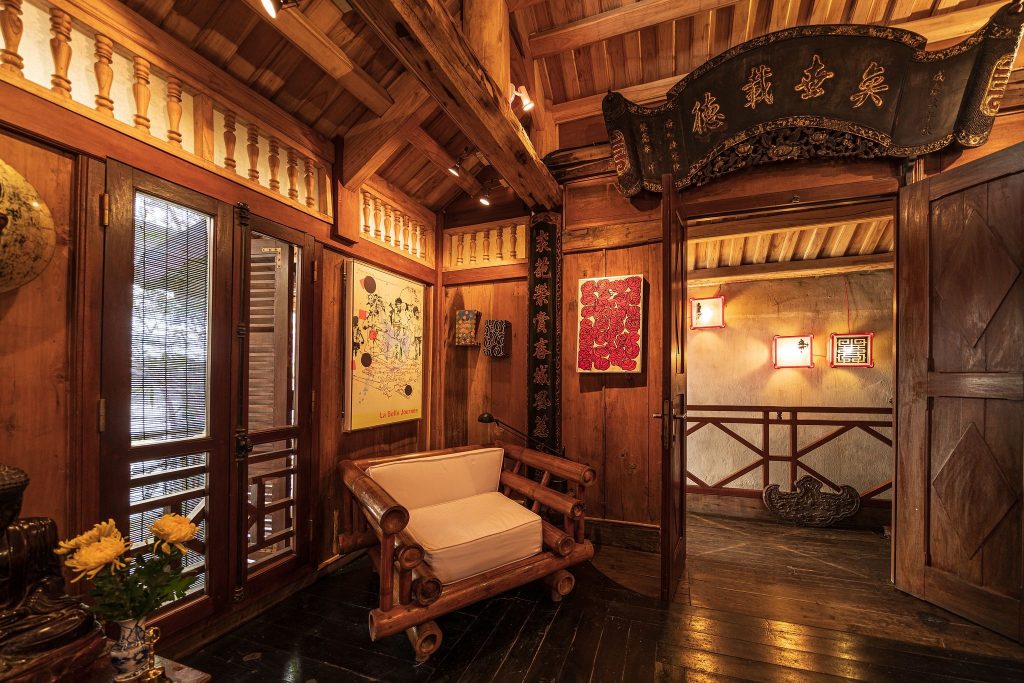
Third floor.
On my first day in Vietnam after the studio visit to Hà Trí Hiếu, Vinh had taken me to the Kim Lien Pagoda on West Lake, at that time, surrounded by fields of flowers and big lotus ponds. I remember that I said that day to Vinh, “You can just leave me here. I would like to live here.” Vinh never forgot this and he designed the entrance of the house as one would design the entrance doors of a pagoda. Once inside, he followed the angular wooden ceiling design used in the pagodas, the systematic placing of the columns and created a subtle, quiet atmosphere very similar to what I had experienced. We both contributed our ideas to create the rest of the house, but I must say the house really is Vinh’s own artistic creation of a unique art space. I feel totally blessed to have had this opportunity with Vinh and then to have the privilege of living here, now for 26 years, I am astonished by my good fortune and so grateful.
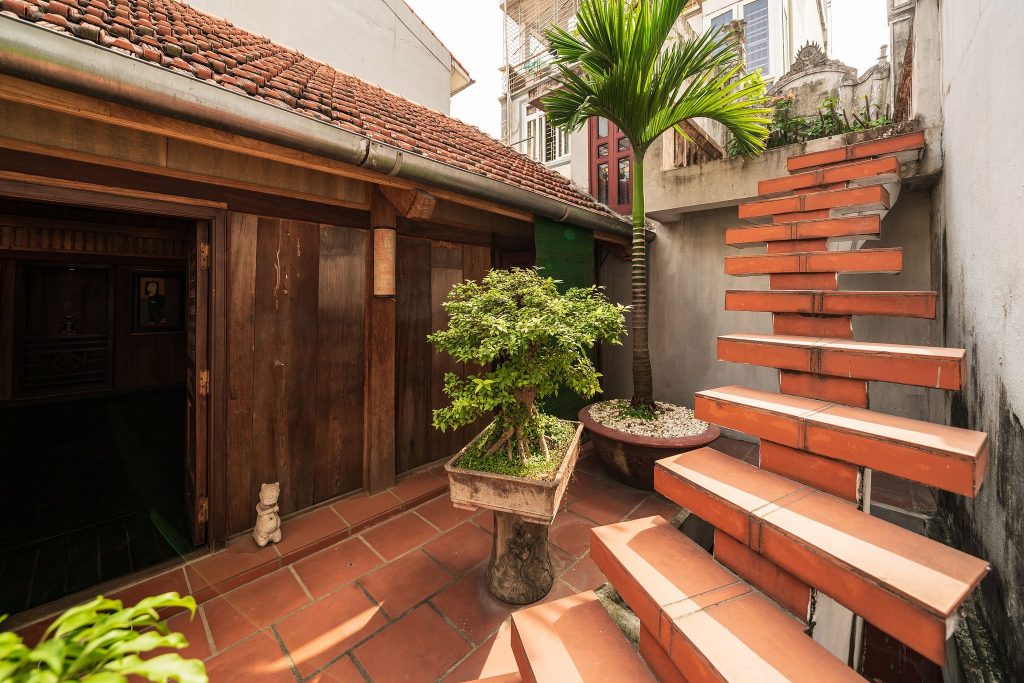
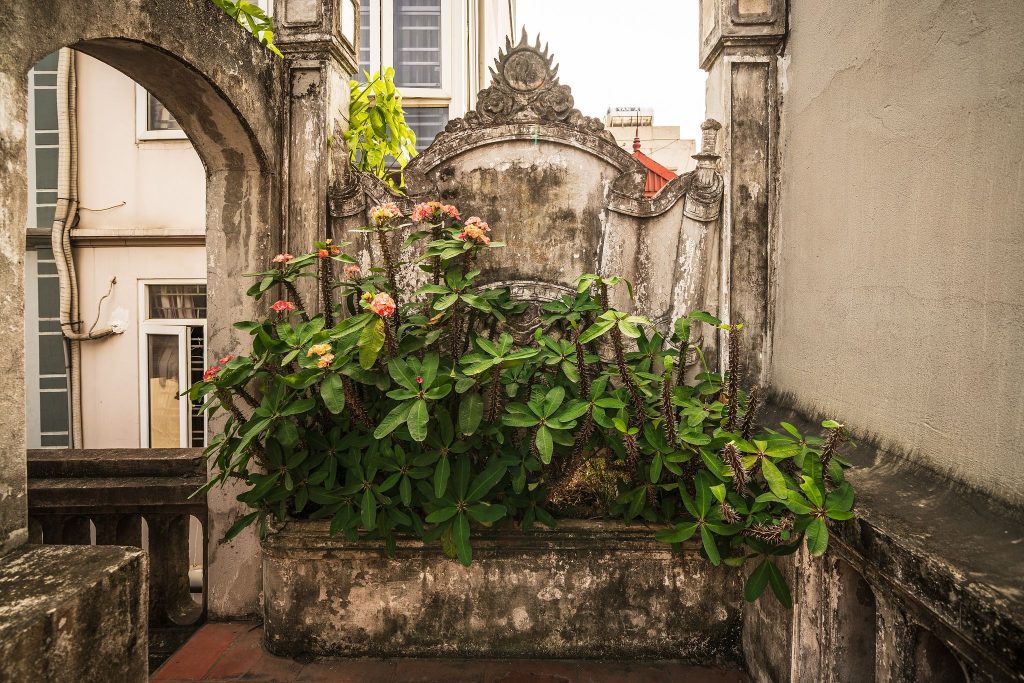
Third floor outside stairs leading to “[a] place where I can fly.”
The house suffered a disastrous fire in 2015. What did you lose, and did you ever think to leave the house?
I was very fortunate that my neighbor saw the fire start and immediately called Vinh, my assistants and the fire department. Everyone was there within 15 minutes and they did a heroic job of putting out the fire and saving most of the house. I lost a few artworks from the third floor which is where the fire started. That of course is painful, but also we had to throw out 2.1 tons of art books we had published and collected over all these years so that was hard.

Red Buddha in front of a painting by Nguyen Cam.
However, as a practicing Buddhist, I feel this was just a lesson in non-attachment and impermanence. I think this fire was in some way a gift for me. I now fully do realize and accept that all is impermanent and that one must live each day grateful for what one has and leave the rest to fate.
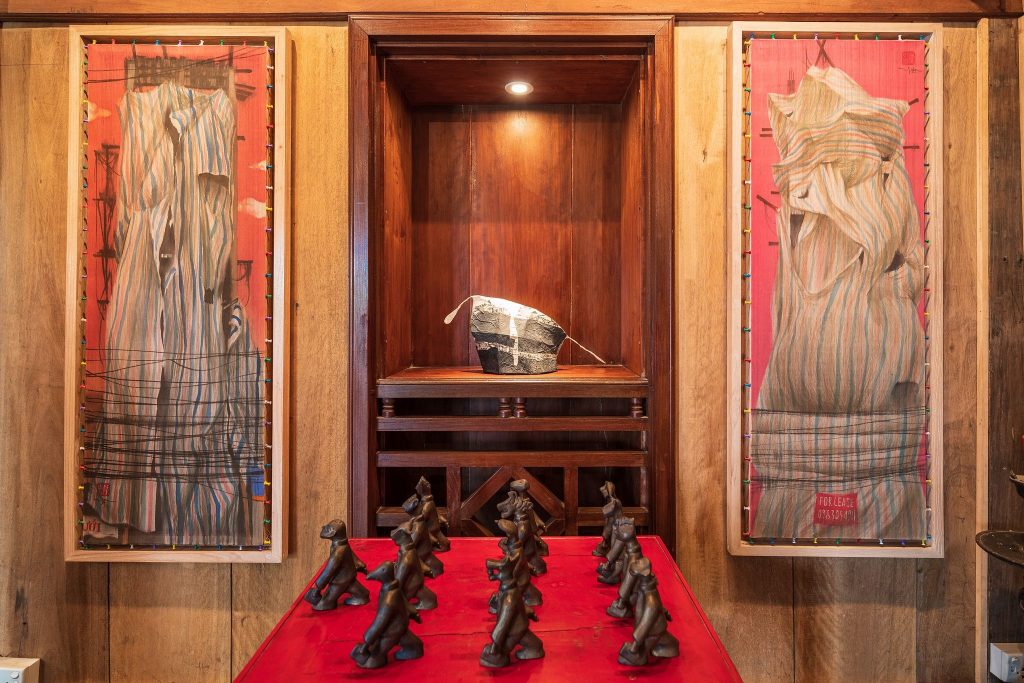
Silk works by Nguyen The Son, lamp by Vu Kim Thu, bronze sculpture by Nguyen Thi Chinh Le.
What are some of the gallery’s milestone artworks on display?
The lacquer sculpture works of our artist from Hue, Lê Thừa Tiến, beautifully crafted and very significant works of art, the Nôm calligraphy works of Lê Quốc Việt and the Zenei group of Nôm scholars, the lacquer sculpture of Phi Phi Oanh, one of Vietnam’s most innovative lacquer artists, the bronze sculptures of our Buddhist artist Chinh Lê, the varied works on dó paper and lacquers by our wonderful artist Đinh Thị Thắm Poong, the multifaceted works of our most senior artist, Nguyên Cầm…Oh, I love all the works we have here in the gallery so I could go on and on and on!
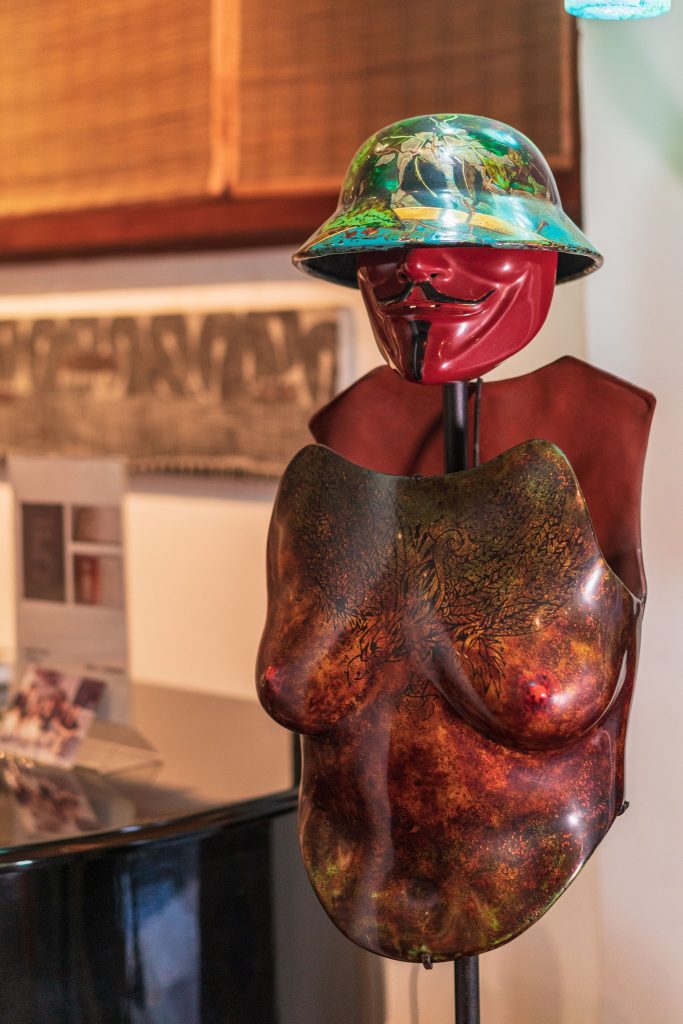
Lacquer sculpture by Phi Phi Oanh.
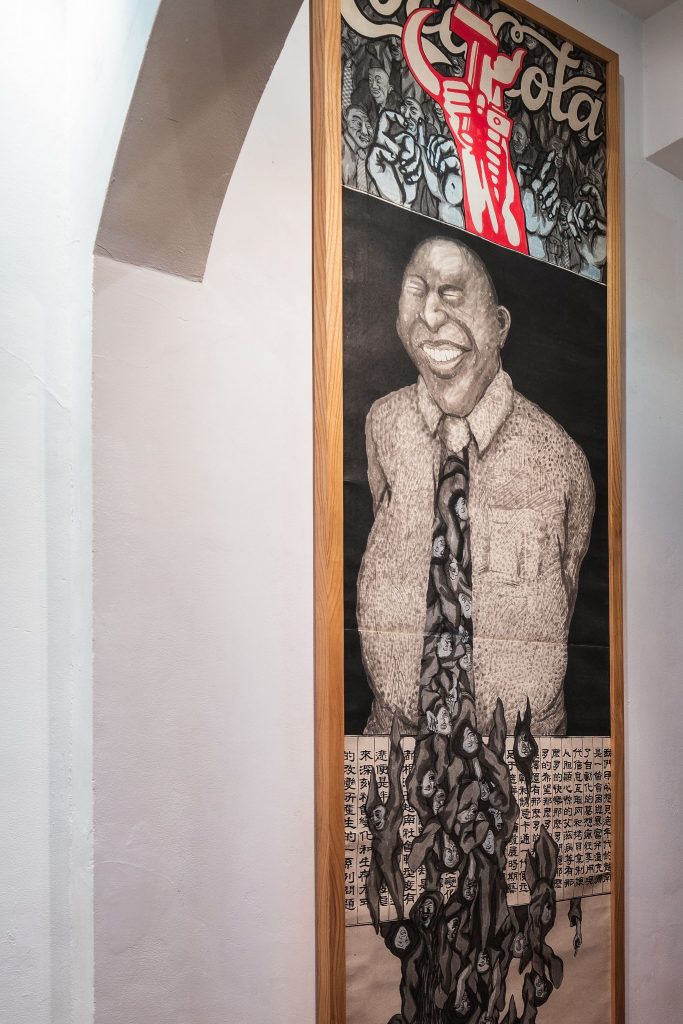
Le Quoc Viet.
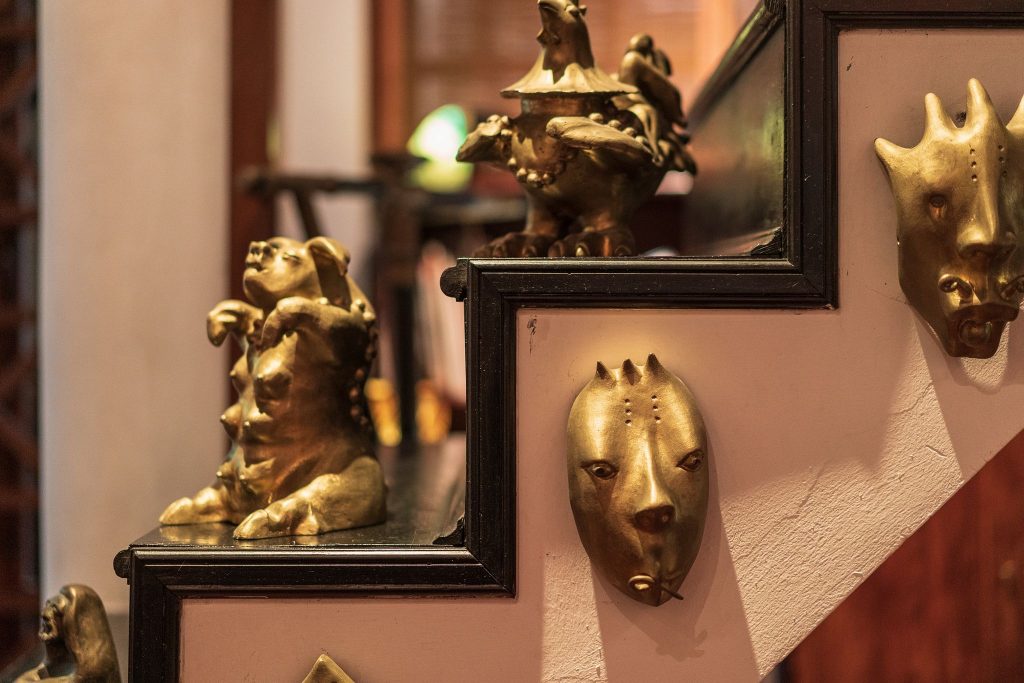
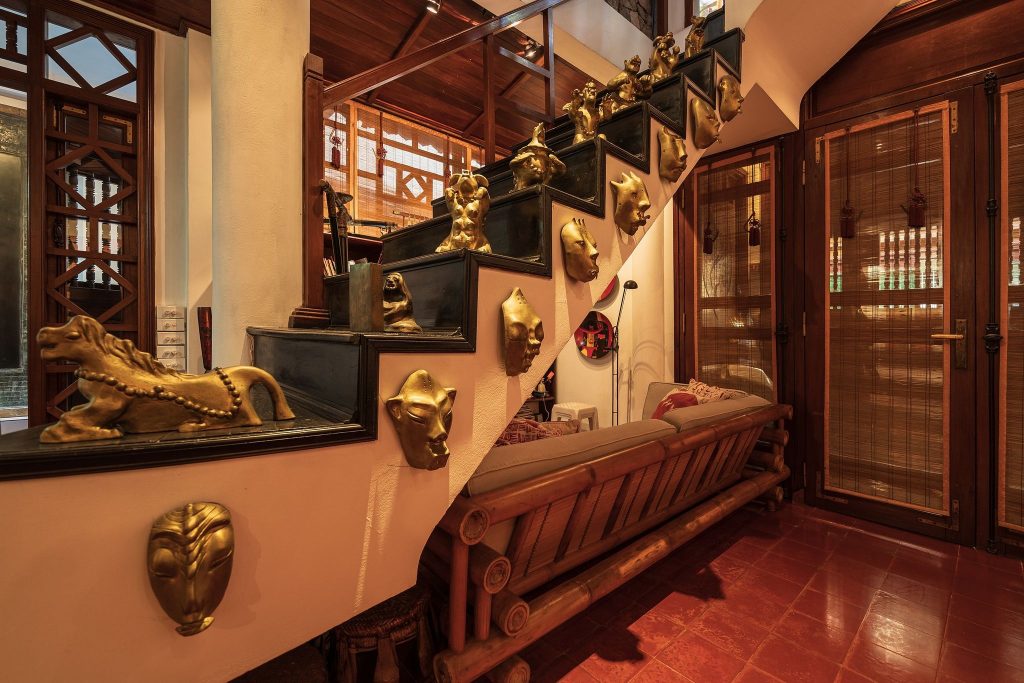
Nguyen Thi Chinh Le, bronze sculptures and masks.
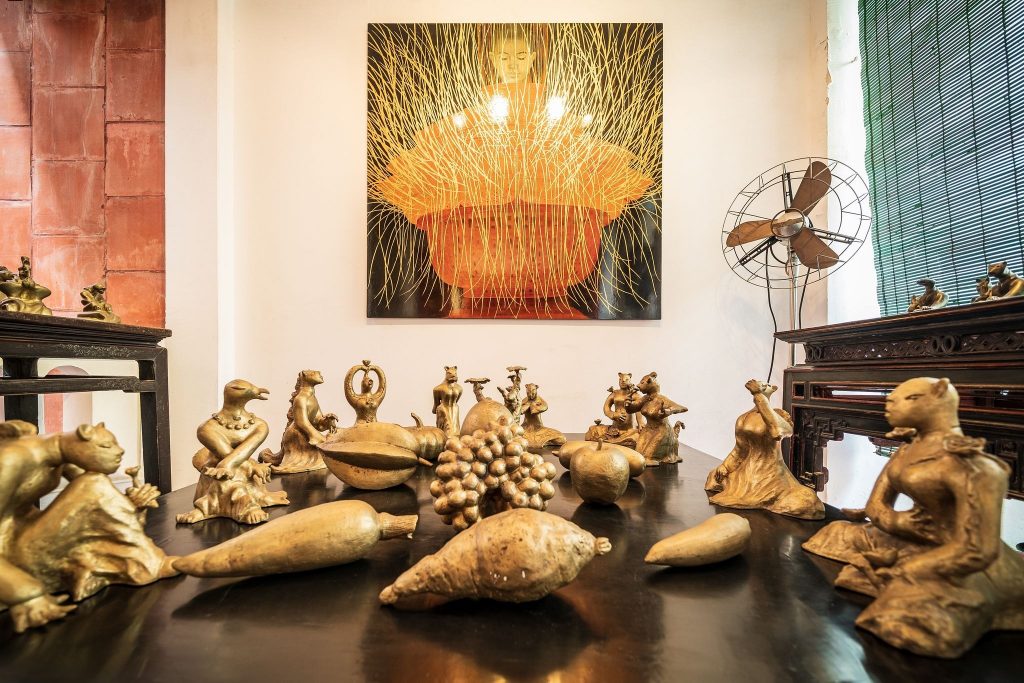
Nguyen Thi Chinh Le, bronze sculptures.
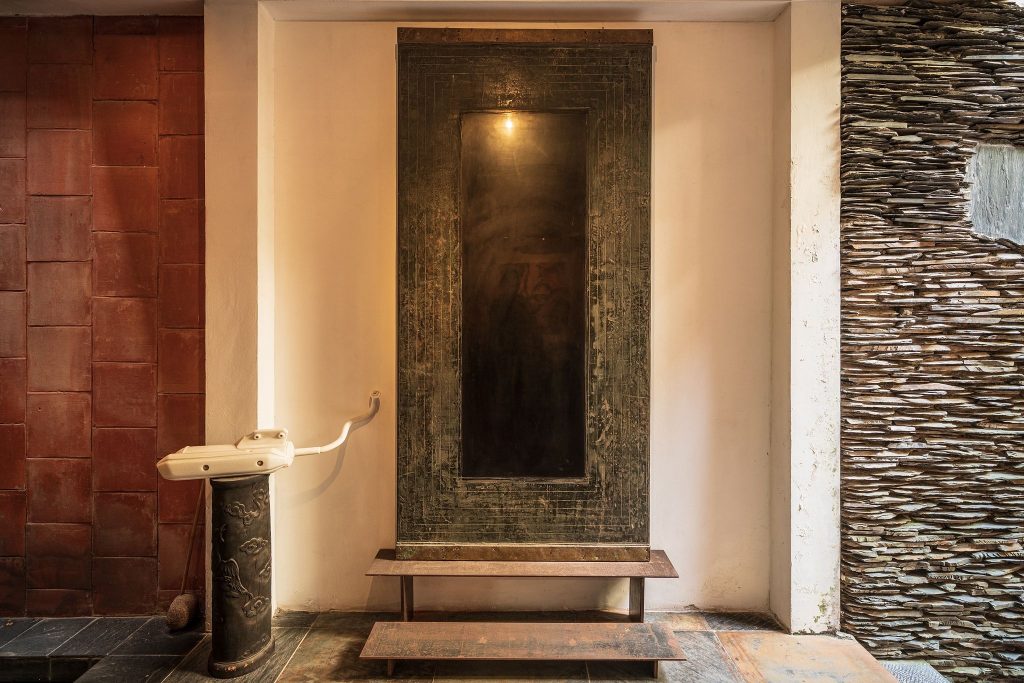
Le Thua Tien lacquer ‘Reflection III’ next to Jorge Rivera marble sculpture.
In previous interviews, you have mentioned you and your late husband’s dream of setting up an artists’ colony. Looking back at your years of work in Asia and Vietnam, do you feel you have achieved this dream?
That was/is a beautiful dream. I do feel as though I have accomplished a part of that dream. I have worked with some of my artists for 25 years and have watched them develop and grow. I have done exhibitions all over the world and am really grateful to have the opportunity to work with all these wonderful artists.
I always want to do more, but I realize that I am getting older and never know how my health and abilities will be in the future. So now I want to see how I can help plan how to continue these many activities.
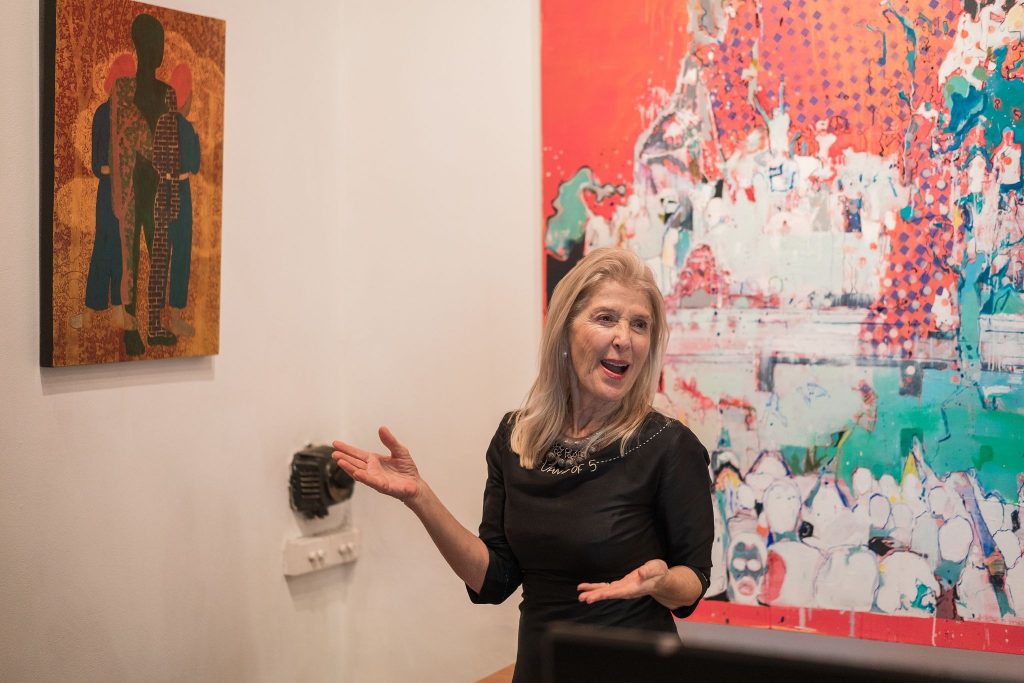
Suzanne with Dinh Thi Tham Poong lacquer, and Le Quy Tong.
What do you hope is the future of the house? How would you like the legacy of your work to continue?
Well this is a concept I am trying to formulate in my head. I love my work so much that it is hard not to be doing it. But knowing that I am not going to live forever, I am beginning to think about how to proceed. I guess in a perfect world, I would love to see a company or an individual who was passionate about art buy this house, and at least some of my private collection, for I need money to live on as I get really old.

Dinh Cong Dat’s schoolboys.
Ideally, I would like to see this house become an art research center where scholars, artists, collectors, etc. can come to see art, have talks, music performances, art tours… there are limitless art-oriented activities that could happen here. Of course, I also want to try to create a situation where my loyal staff of some 24 years will still keep their jobs and continue my work, our work, but in their own unique way. It is time for me to pass on the baton!
It would be perfect if I could find an American company or foundation that would take this place over for I think this house and gallery is a wonderful symbol of the love and admiration I have for the Vietnamese people and also a symbol of the enduring friendship of our two nations, America and Vietnam.
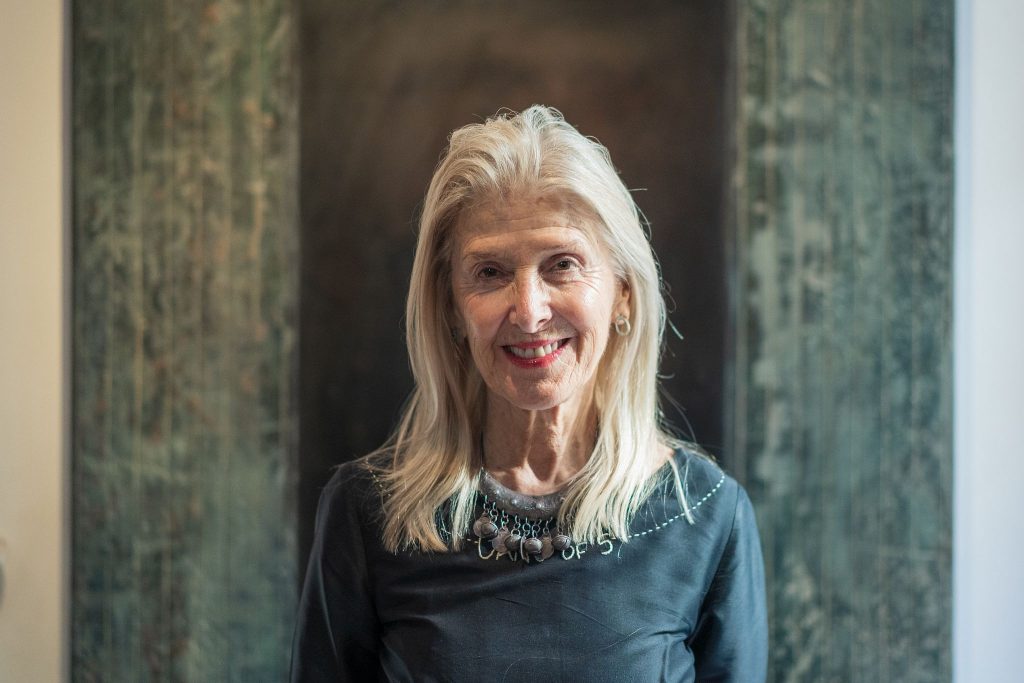
Suzanne in front of Le Thua Tien lacquer “Reflection III”.
Did Kali meet Mick Jagger?
Ah but of course! Two rock stars! They had a silent but very meaningful recognition.
Instant communication on the highest level.
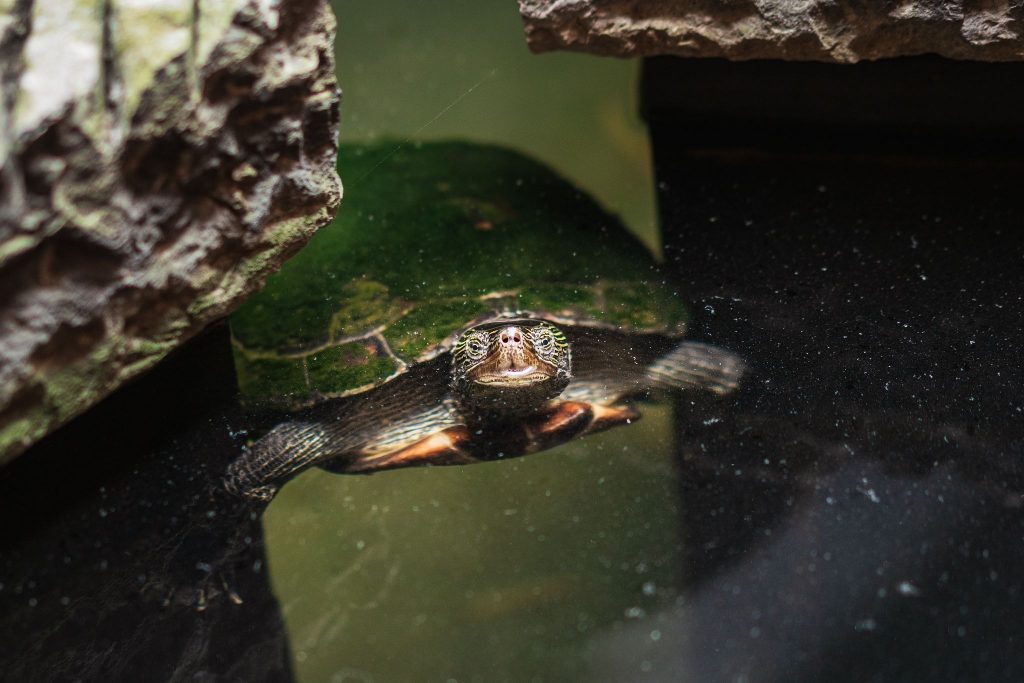
Kali, the ultimate rock star!
Source: Saigoneer


